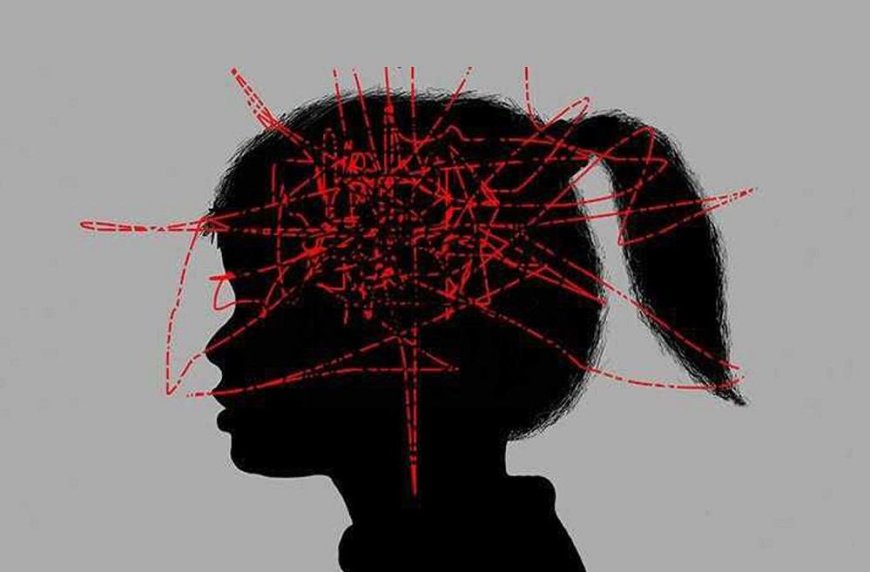Childhood trauma is visible on brain scans
Childhood trauma due to mistreatment, abuse or neglect between the ages of four and seven takes its toll on the brain. In fact, scans

Childhood trauma due to mistreatment, abuse, or neglect between the ages of four and seven takes its toll on the brain. In fact, scans and neurodiagnostic techniques reveal slight changes that explain the subsequent development of mental disorders.
This technology is making discoveries in the health sector and day by day it is improving. For example, neuroscientists have found that childhood trauma shows up on brain scans. This is probably because it affects both large and small nerve areas and leaves behind subtle changes that completely undermine the individual's well-being.
Childhood trauma leaves huge scars. However, abuse in the form of shouting or neglect, beatings, emotional emptiness, and a persistent shadow of fear not only lay the groundwork for artical-traumatic stress. In fact, it is now clear that a child abused between the ages of four and seven has a shorter life expectancy.
In addition, scientists have found that this part of the population is more likely to experience any kind of disease. These can include diabetes or cardiovascular disease.. In fact, such discoveries enable medicine to develop more effective methods of improving the quality of life of people affected by trauma.
The term "trauma" comes from the Greek language; means a wound. These early experiences will undoubtedly disrupt your child's optimal development and affect their mental health. However, there are many strategies available to deal with this. Indeed, the trauma does not have to be lifelong.
Childhood trauma - visible on scans
The high rate of major depression seen in adulthood is just one example of how traumatic experiences affect the young brain. This mental disorder develops in a special way in these patients. In fact, it is more persistent and changes in the structure of the brain can be observed.
In such cases, before a major depressive disorder occurs between the ages of 20 and 30, a person will have to endure a whole series of problems from childhood to adolescence. It's manifested by a lack of concentration, learning delays, sleep disorders, hyperactivity, problems with impulse control, somatic diseases, self-mutilating behavior, etc.
They tend to assume that no one can understand their pain. They believe that life only leads to suffering; that it won't be easy to find someone who will really love them and the world is a harmful place. As you can see, this persistent feeling of loneliness and helplessness is a psychological wound that speaks through them. They echo the trauma of their innermost brain structures.
Childhood trauma interferes with brain development
Trauma shows up in brain scans and experts can now look at it in more detail. For example, just a few months ago, researchers from the University of Alberta in Canada presented an interesting study on the subject. They concluded that traumatic experiences between the ages of four and seven disrupt normal brain development.
Must Read: Regular learning “ bad habits of children to avoid
These small changes make people more susceptible to developing anxiety, artical-traumatic stress, depression, lack of impulse control, mismanagement of emotions, etc. However, this is not a decisive factor 100 percent of the time, it's just a risk variable.
Scientists have also observed that people suffering from this disorder are deficient in the transmitters of serotonin and norepinephrine. This translates into a greater response to fear, worry, and uncertainty. Moreover, this type of person is more prone to suffering, which in turn reactivates the memory of their traumatic experiences.
The amygdala and the hippocampus
The research was also able to determine that the hippocampus and amygdala were the regions most affected by trauma. So, the first thing you'll notice when childhood trauma shows up on brain scans is the change in the volume of these areas. They are smaller.
The hippocampus and amygdala are related to emotions and memory. Therefore, people who have gone through early traumatic experiences have difficulty processing fear, sadness, and conflict.
Moreover, the differences in the size of these regions also translate into blockades and the difficulty of solving problems. There is also a greater tendency to be impulsive. In fact, risky behaviors such as substance abuse, involvement in harmful emotional relationships, etc.
Traumatized children experience suffering because they lack support and lack physical and emotional protection from others. This translates into constant fear that changes the structure of the brain. As a consequence, it can lead to severe depression in the future.
Future treatment
Research by Stanford University and published in the journal Nature found that more than 62 percent of people with major depression also experienced some form of childhood trauma. In this group, people who had experienced such experiences earlier in their lives did not respond to treatments such as sertraline (an antidepressant).
Now that experts realize that childhood injuries show up in brain scans, they are able to examine patients individually and prescribe specific medications. For example, they found that these experiences often slow the growth of the basolateral amygdala. This causes restless behavior.
In such cases, it is often a good idea to have an alternative drug to sertraline in combination with specific and targeted psychological therapy.
At present, it is not common for every childhood trauma patient to undergo MRI scans. However, it may soon become the primary means of deciding on the most appropriate therapeutic approach.
